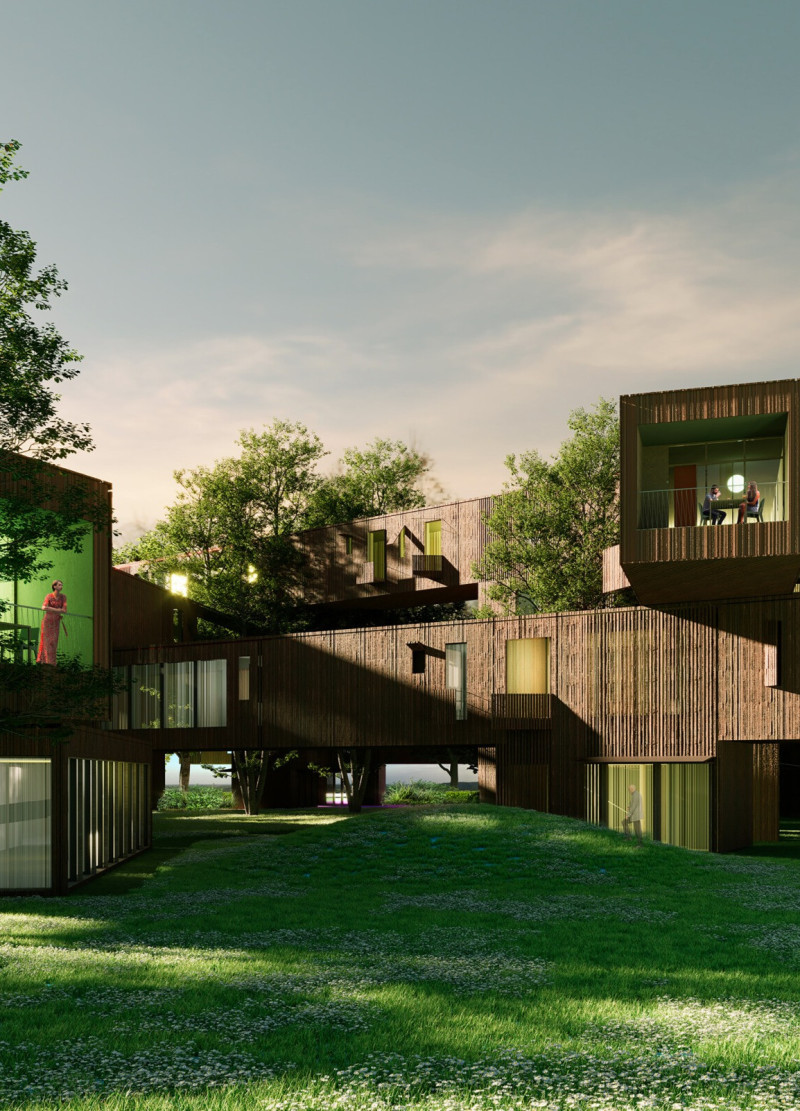5 key facts about this project
At its core, the project represents a thoughtful engagement with the characteristics of its geographical location. The building integrates local materials and construction techniques, fostering a sense of connection with the community's heritage while promoting sustainability. The thoughtful selection of materials exhibits a commitment to reducing the environmental impact, employing elements such as sustainably sourced wood, recycled metal, and eco-friendly insulation, which help minimize the carbon footprint of the structure.
The functional aspect of the project is meticulously crafted to cater to the needs of its users. The layout is organized to facilitate efficient movement and interaction among occupants, encouraging social engagement within its various spaces. This is particularly evident in the design of communal areas, which are strategically placed to foster collaboration and promote a sense of community among visitors and residents alike. The project also includes dedicated areas for relaxation and recreation, illustrating a holistic approach to contemporary living.
One of the standout elements of the design is the facade, which showcases a harmonious blend of transparency and solidity. Large windows and open spaces allow natural light to penetrate deep into the interior, creating a warm and inviting atmosphere. Notably, the choice of glass panels reflects a modern architectural language, while also contributing to energy efficiency through passive solar gain. The juxtaposition of solid and transparent materials creates visual interest and establishes a dynamic interplay between the interior and exterior environments.
Furthermore, the roof form is another distinctive feature that embodies innovative architectural ideas. Implementing green roofs not only enhances the aesthetic quality of the building but also contributes to biodiversity and mitigates rainwater runoff, reinforcing the project's commitment to ecological design. This emphasis on green infrastructure is aligned with broader trends in architecture that prioritize environmental stewardship.
The project also showcases a meticulous attention to detail, with carefully considered elements such as customized fixtures and fittings that reflect local craftsmanship. This attention to detail not only serves functional purposes but also enriches the user experience, infusing the space with character and authenticity. The design solutions employed exhibit a forward-thinking approach, integrating advanced technology for energy efficiency without compromising on the comfort and aesthetic appeal of the spaces.
The unique design approaches evident in this project speak to a larger narrative within modern architectural discourse, emphasizing community-oriented spaces that prioritize well-being and environmental responsibility. The interplay of materiality, form, and function exemplifies what contemporary architecture can achieve when it responds thoughtfully to its context and aims for sustainability.
For those interested in further exploring this architectural endeavor, it is recommended to engage with the project's architectural plans, sections, and designs. Detailed insights into the innovative architectural ideas and the comprehensive planning process will provide a deeper understanding of the thoughtful approach that characterizes this project.


























